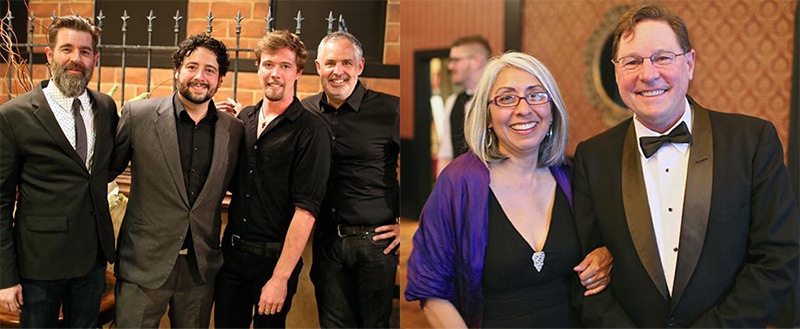Four Lessons for the Amateur Philanthropist
BLOG
BLOG


These days there are many different ways we can show support for a cause. We can use our wallets to purchase with a purpose, make donations to nonprofits online, and sign-up for social media posts alerting us to volunteer opportunities. Anyone who wants to be connected, active, and living with a purpose can participate in the amateur philanthropist lifestyle—that is to say, doing good without Bill Gates’ bankroll.
Last year I completed a large installation of 150 portraits as part of The City of Boise’s Sesquicentennial celebration. The project, entitled “Collaboration” brought together a wide variety of people from every walk of life. A few of the participants in the project suggested that I host an event to reunite project participants, giving them a chance to meet, mingle and celebrate our accomplishment. Since I’ve always wanted to use my work for something more than just artistic expression, the idea of hosting a reunion/fundraiser was born.
I knew the easiest fundraising option would be a digital campaign. I make and maintain most of my connections online—so my social networks are well-established and open to receiving invitations like this from me. That being said, “Collaboration” was all about a face-to-face experience. People came to my studio and we talked before, during and after the shoot. My job was to make a very real connection with my subjects and they made the same connection with me—which showed through in the portraits.
So while I proudly wear my amateur philanthropist badge on my digital sleeve, I felt the need to do something more, dare I say, traditional? I wanted to host an honest-to-goodness event fundraiser. In the flesh. In a building. In real-time.
The following is a list of things I learned while organizing and hosting what turned out to be a very successful first fundraiser.

Images by Alex Couey
The first question people posed to me when I ran the idea of hosting a fundraiser by them was, “Why?” They didn’t want to know specific details, they wanted a compelling story, a reason to get excited, to participate and to volunteer.
Crafting a short but informative elevator speech is a great way to convey the “why” while sharing some information about your event.
For example: We came together as a community to create the “Collaboration” series for our sesquicentennial celebration. It only makes sense to me that our reunion should also benefit the community. We can do good together!
There are over 1.5 million worthy nonprofits out there, so it might be hard to choose a fundraising partner. I suggest starting out by asking yourself a few basic questions:
Be sure to select a nonprofit that aligns with your personal beliefs and make sure to pick up the phone and talk to someone at that nonprofit. Ask questions, get a feel for their team to see if they are a good fit for you. Be sure to set up a time to meet with them in person (if possible) before your event.
I selected the Women’s and Children’s Alliance, an organization that provides safe shelter, individual and groupcounseling, court advocacy and treatment for survivors of domestic abuse and sexual assault. Women’s rights and issues play heavily in my artistic work so the pairing was a natural fit. I selected a local nonprofit and was happy with the support they gave me as I organized the event. This included reaching out to local businesses for sponsorship and sharing event information on their social media channels.
Hosting a fundraiser is a lot of work! It’s easy to over extend yourself and your expectations. Set your goals before you start working; this will help you maintain perspective. Here are a few of the questions I asked myself when getting started:

Image by Alex Couey
On April 17th, 2014, I held my fundraiser. It was well attended, well received and raised $2,000 dollars for the Women’s and Children’s Alliance (twice my goal). It wasn’t easy. Plenty of things went wrong before the event and there are plenty of things on the above list I wish I had known before I began. That being said, the amateur philanthropist in me was proud.
Perhaps the most important lesson I learned was just how powerful one person can be. The ‘power of one’ is your voice, the story it conveys and the actions it encourages others to take.
Blog
Here's a list of questions to consider before starting an employee volunteer program.
Blog
A CSR partnership between HP and Kiva enables employees to invest in microentrepreneurs.
Blog
Looking for a more meaningful gift for Mom?